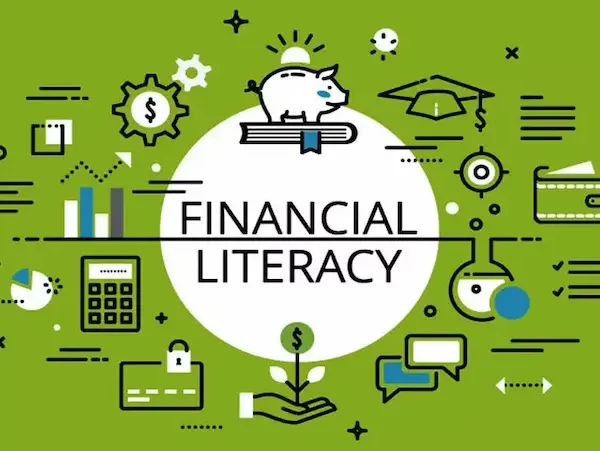Creating sound financial habits in your kids now will pay off later in life. This is a priceless gift from you as parents. Teaching the value of conserving money develops critical abilities for navigating the intricacies of the modern world in addition to laying the groundwork for good financial conduct. We’ll look at five strategies in this post to help your kids learn how to save money.
Tips:
Set an example for others to follow
Youngsters are acute observers, and they frequently pick up new skills by copying the actions of others in their environment, particularly their parents. Thus, setting an example for your child in terms of saving money is one of the best methods to educate them how to do so.
Show that you have sound financial practices by:
- Budgeting: Have age-appropriate conversations with your kids about creating a household budget. Teach kids how to set aside money for various necessities, such as groceries, bills, and savings.
- Setting aside money for goals: Include your youngster in the process of setting savings goals for future costs or family activities. Show children the value of saving for specific goals by using it to finance a family vacation, a special purchase, or a contribution to their college fund.
- Delayed Gratification: Refrain from making rash purchases to teach your kids the virtue of waiting for something important. Describe the increased enjoyment that comes from saving and waiting for something unique.
You may provide your child with a concrete and meaningful learning experience by modeling good financial conduct.
Present a Piggy Bank or Savings Jar
Children may find the idea of saving money more interesting if it is presented in a concrete and visual way. Introduce a piggy bank or savings jar that is only meant for their funds. They may really see their money rise over time thanks to this straightforward yet powerful technique.
Here’s how to put this into practice:
- Decide on a Savings Objective: Assist your kid in deciding what they want to save for—a game, a toy, or anything else they want.
- Consistent Contributions: Urge your child to consistently add to the savings jar with a percentage of their allowance or any presents they receive.
- Celebrate Milestones: Congratulate them on their accomplishments when they hit particular benchmarks. This encouraging feedback strengthens the link between goal achievement and cost savings.
Children might find the practical experience of a savings jar to be engaging and helps solidify the idea of saving money.
Emphasize the Value of Budgeting
An essential financial skill that establishes the foundation for prudent money management is budgeting. Even though it could appear complicated to young children, there are entertaining and instructive ways to explain fundamental budgeting ideas.
Here’s how to instruct your kid about budgeting:
- Organize Spending: Assist your youngster in comprehending the idea of dividing costs into “needs” and “wants.” Give examples of each category and emphasize the significance of setting needs in order of importance.
- Allocate: Assist your youngster in dividing their allowance into several categories if they get one. For example, some may be put towards savings, some toward immediate needs, and maybe a third toward charity contributions.
- Monitor Your Spending: Urge your youngster to monitor their expenses. A straightforward ledger or even a kid-friendly budgeting tool might be used for this.
You may give your child a useful skill that will help them manage their finances as they become older by exposing them to budgeting at a young age.
Create an account for savings
Giving your kids an introduction to banking and savings accounts makes for a more structured and instructive experience. Numerous financial institutions provide kid-friendly savings accounts with extra features and rewards.
To open a savings account for your child, follow these steps:
- Look into Kid-Friendly Accounts: Examine savings account choices made especially with kids in mind. To promote saving, look for features like little or no fees, instructional resources, and maybe even a low interest rate.
- Together, visit the bank: Open your child’s savings account by taking them to the bank. A lot of banks welcome kids and sometimes even give them a small gift or memento to make the visit special.
- Describe the concepts of banking: Explain fundamental banking concepts including deposits, withdrawals, and the idea of earning interest once the account has been set up. The foundation for financial literacy is laid by this practical experience.
In addition to giving your child a useful opportunity to save money, a savings account teaches them fundamental financial principles that will only become more important as they become older.
Make Everyday Tasks Into Educational Opportunities
There are many of possibilities in everyday activities to teach your child about money and saving. These everyday experiences—from grocery shopping to organizing family vacations—can be turned into insightful teaching moments.
Here’s how to make routine tasks into educational opportunities:
- Compare costs: As your child is shopping, have them help you compare costs and make economical decisions. Talk about the idea of value for money.
- Make a Shopping List: Assist your youngster with making a shopping list before you go shopping. This helps prioritize necessities above wants and emphasizes the value of preparing.
- Talk About Trade-Offs and options: If your child shows interest in a non-essential item, have a conversation with them about trade-offs and options. Describe how selecting one thing could imply giving up the chance to buy another.
Your child’s learning experience will naturally include financial literacy if you incorporate money topics into routine activities.
In summary:
Encouraging your child to save money is an excellent way to ensure their financial security in the future. You may offer your child a solid basis for responsible money management by setting an example, introducing concrete tools like savings jars, teaching budgeting principles, opening a savings account, and transforming routine activities into educational opportunities.
Recall that the objective is to foster a good and knowledgeable attitude regarding money in addition to imparting information. These early teachings will act as a compass for your children as they become older, pointing them in the direction of a lifetime of success and financial confidence.



